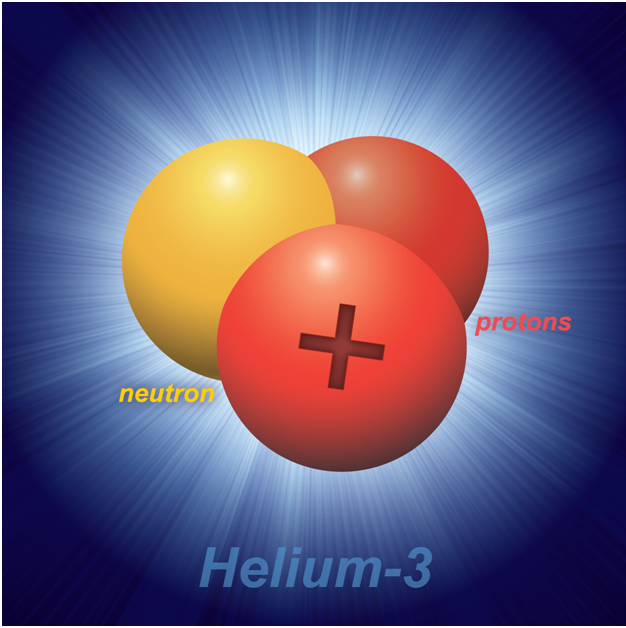Last week, I blogged about the Chinese ambition to mine the Moon for helium-3 to fuel fusion reactors. This week, I am going to assess the practicality of that intention.
Helium-3 is stable isotope of helium which contains two protons and a neutron in the nucleus. He-3 can fuse with deuterium but it requires higher temperatures than deuterium-tritium fusion. This reaction does not produce as many neutrons as D-T fusion but neutrons are still produced. He-3-He-3 fusion produces no neutrons which makes it desirable but requires even higher temperatures making it more difficult to utilize.
There is virtually no He-3 on Earth. However, after billions of years of bombardment of the lunar surface by the solar winds, the upper layers of regolith (soil) on the lunar surface are saturated with He-3. There is estimated to be a million metric tons of He-3 on the lunar surface down to a depth of a few yards. It has a concentration of about ten parts per billion in sunlit areas and about fifty parts per billion in areas that are permanently in the shade.
Forty seven tons of He-3 which would fit into the cargo bays of two space shuttles could power China for a year if burned in fusion reactors. A member of the Chinese Academy of Sciences has said that three shuttle missions to the Moon could bring back enough He-3 to supply the energy needs of the whole world. This might be overly optimistic considering that it would take two shuttle to bring back enough for China which represents only a third of the electricity consumed in the world. A Russian space company has also said that He-3 for fusion fuel would be a commercially viable export for lunar operations.
Given the very low concentration of He-3 in the regolith, a huge amount of lunar regolith would have to be processed to yield useful quantities of He-3. One hundred and fifty million tons of lunar regolith would have to be mined and processed to acquire one ton of He-3. So in order to obtain the forty seven tons of He-3 mentioned above, it would be necessary to deal with about seven billion tons of lunar regolith. This would be a huge undertaking and would have to be repeated every year to supply all of China's energy needs. This seems like a hard way to get electricity.
The lunar regolith also contains a lot of oxygen. Iron, aluminum and magnesium are also present in significant quantities. Perhaps He-3 production could be part of a larger and more comprehensive mining operation to obtain multiple useful elements from the lunar regolith.
Considering space resources beyond the Moon, there is plenty of He-3 in the atmosphere of the gas giants in the solar system. Jupiter is the closest of the gas giants but it is also the most massive. Its intense gravity and electromagnetic fields would make mining He-3 very difficult. The other gas giants such as Saturn would be easier to mine but they are much further away.
